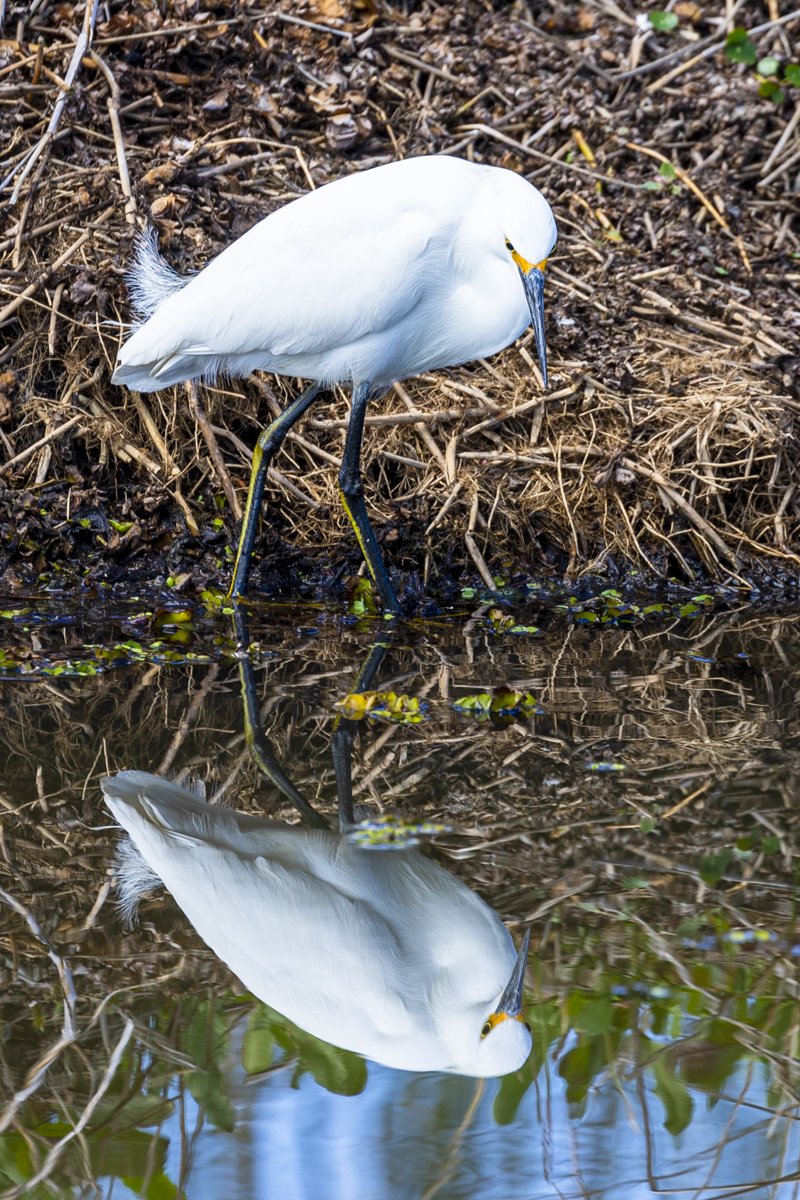
March 16, 2022
CAMERON PRAIRIE NATIONAL WILDLIFE REFUGE
1428 LA-27, Bell City, LA 70630
“Cameron Prairie National Wildlife Refuge is located approximately 25 miles southeast of Lake Charles, Louisiana, in north central Cameron Parish. It contains 9,621 acres that include fresh marsh, coastal prairie, and old rice fields.” - Wikipedia
This refuge was recommended online as a place to visit, but for some reason I wasn’t too excited about making the trip. After my visit to the Sebine Refuge the day before and seeing only a few waterfowl, I figured this refuge wouldn’t be any better. This refuge had a visitors center, however, it was closed. I drove on to the Pintail Wildlife Drive which I had read about in their brochure. The drive is along a 3-mile, gravel, one-way road, which didn’t look like it had been maintained in a while. About a quarter mile in I found the boardwalk I had seen in the brochure. As I pulled over into the parking area, I couldn’t tell whether the boardwalk was open as orange fencing that I’m guessing once barricaded the entrance was laying on the ground. I decided to forgo the boardwalk as I wasn’t feeling very adventurous. A little dejected I continued on the drive. In about another quarter mile in there was some open water with some ducks swimming, as I approached, I began to see some other waterfowl in the distance, there were a couple egrets, some ibis, and I spotted a Great Blue Heron. I took some pictures but because the birds were quite a distance from me I wasn’t too excited about what I had shot. Continuing on I saw some more birds in the distance, I crept along slowly hoping some of the birds would come closer, but then a car came from behind, I was uncertain of how dry the shoulders were, so I didn’t want to pull over to let the car pass, so I continued on. About a mile in the road turned to the left, there was a little gravel area that I was able to pull off into and the car went by me. There was a sign telling people not to feed or disturb the alligators. In my head I gave a small, sarcastic laugh, because I hadn’t seen any signs of alligators in the refuge so far. Rounding the corner, I could see the road followed a canal on the left with open water on the right. Down the way I saw several white birds, so my spirits began to pick up. Going slow, I investigated the canal and saw my first gator of the day. During the rest of the half-mile stretch I was amazed by the number of alligators, different waterfowl, and turtles in the canal and along the road. I’ll bet it took me twenty minutes to drive that half mile as I was stopping every fifteen seconds to take a picture. After the half mile the road turned again taking me the remaining 1.5 miles back to the refuge entrance. There were several gators and a few birds in that last stretch. As I finished the loop I was thinking my day had been salvaged. Not having anything else to do, I decided to drive the loop again. It took me 45 minutes to drive the 3-mile loop the second time while taking several more pictures.
I can’t imagine what the refuge must be like December through February, but I’d like to find out someday.
Snowy Egret
Blue Heron
The first alligator I saw.
It is sometimes difficult to spot the alligators here.
White Ibis
Snowy Egret
This Egret was frozen in this position for about two minutes, I assumed it was stalking its prey, but then gave up.
Red-Eared Slider Turtle
Red-Eared Slider Turtle
Brown Thrasher (?)
White-Faced Ibis
White-Faced Ibis
Not sure, but I think the large gator on the right thought he was hiding from me.
A view of the canal in the refuge.
This Cormorant was just sitting in the tree until I drove by. He then flew down into the water. Cormorants are birds that dive for food, and so when he got to the water he started diving.
I just happened to see him come up with his dinner.
He juggled the fish getting it in position to swallow.
And then, in the blink of an eye, he swallowed it.
The alligator is gaping. I learned in the Everglades that alligators and crocodiles use this method to cool themselves, much the same way as a dog panting.
I call this, "Looking in the Mirror."





























